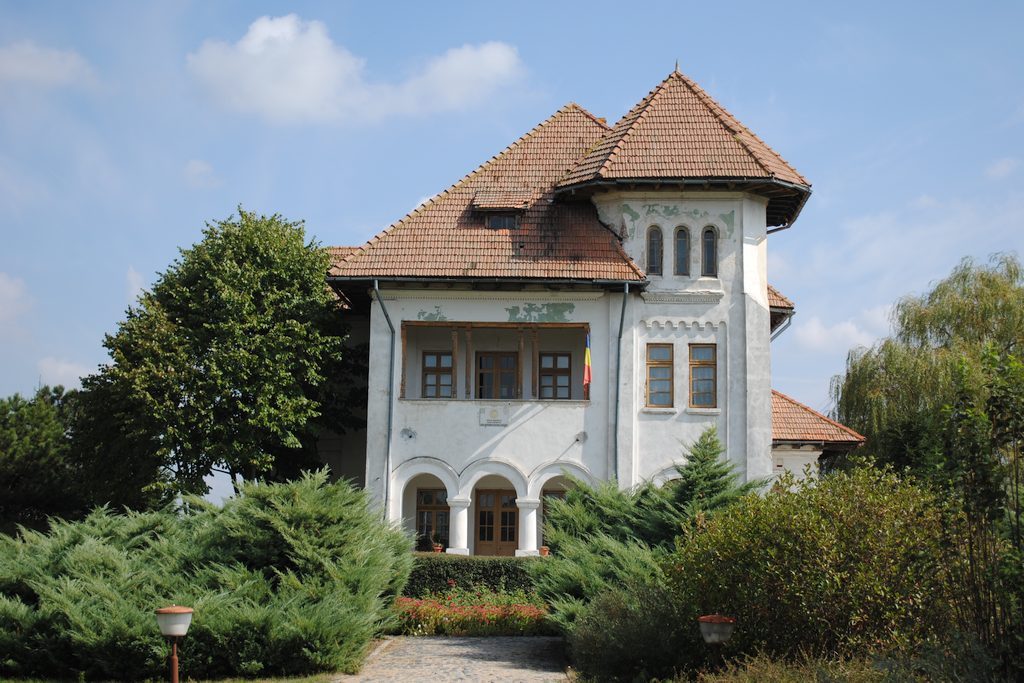

Shortly after the rebels torched the house of George Burca, in 1907, Nicolae Titulescu was married to Caterina Burca. This event determined the father of the girl to give up the restoration of the manor and to propose Nicolae Titulescu to build a house on the extent of his position. The construction of the house was finished in 1910, as seen from the inscription on the pavement at the entrance.
As a sigh of respect to our traditional architecture, Nicolae Titulescu decided the ascension of a house where we find many architectural elements specific to the denominations from Oltenia.
The house has four entrances and two facades, with semiround terraces for for the façade towards the river and with rectangular terraces on the main facade. Both terraces are guarded on the left side by a tower building with three levels. Through the terrace of the level, , located towards the river, grows for over two decades a shrub whose species remained unidentified even today. It represents one of the attractions of tourists arrived at House Titulescu.
During the period 1907-1941, Titulescu House was a place of rest and recreation for the family Titulescu. Administrative headquarters of the estate is located in a building built alongside, by the mother of Nicolae Titulescu in 1899.
After 1940 (until 1949) the house Titulescu was in the administration of Romanian Academy, which according to the testamentary wishes of Nicolae Titulescu, has established between 1945 and 1949 a village and a popular school library.
In 1949 the house came into possession of several institutions. Until its declaration as memorial house, in 1982, for a period of 32 years the building has been used as a chemical fertilizers warehouse, stable for sheep, headquarters of IAS, CAP and City Hall. In 1982 it was affiliated to the Museum of History, as a department, the Nicolae Titulescu Memorial House, founded by Professor Traian Zorzoliu. After 1989, the house and the land remained in the care of the City Hall and later the building was taken over by the County Council, as good of public domain and managed by the Olt County Museum. The collections include personal items, costume and component parts of the office, furniture, photographs, documents, correspondence relating to the life and work of Romanian diplomat Nicolae Titulescu (1882-1941). Of 24 February 2000 it became a department of the Olt County Museum.
